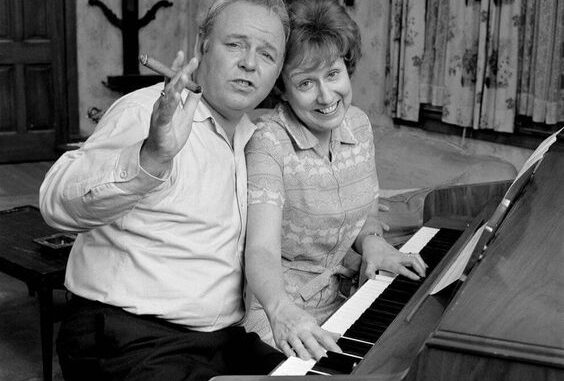
Beverly La Salle broke cultural barriers when she first appeared on the CBS sitcom in 1975 but also reinforced a TV trope, writer Matt Baume finds.
CBS’ “ All in the Family ” was ahead of its time when it introduced a gender-nonconforming character ― and an inclusive plotline that unfolded over three episodes ― in 1975. Unfortunately, the character’s fate was not so radical.
In the latest installment of his “Culture Cruise” video series, Seattle-based writer Matt Baume takes an up-close look at Beverly La Salle (played by Lori Shannon), introduced in a 1975 episode of “All in the Family” titled “Archie the Hero.” As Baume has pointed out, the character identified as a “transvestite” rather than a “female impersonator,” implying her presentation as female may extend beyond the stage.
Beverly’s appearances on the show in 1975, 1976 and 1977 were a television anomaly at the time. Of course, those episodes contain some cringe-worthy scenes and language, by modern standards. A Season 8 episode, “Edith’s Crisis of Faith (Part 1),” portrayed Beverly’s death and, Baume finds, reinforced a trope about LGBTQ people on mainstream TV that still exists.
In the 1977 holiday-themed episode, Beverly spends Christmas with Archie and Edith Bunker (Carroll O’Connor and Jean Stapleton). Afterward, Beverly and the Bunkers’ son-in-law, Mike (Rob Reiner), are mugged on their way to a subway station. Mike implies Beverly is targeted by the attackers for having presented as female, and the character dies in the hospital.
Edith’s subsequent grief made “All in the Family” forward-thinking in that the show was looking at deadly violence against a gender-nonconforming character through a sympathetic lens. However, as Baume points out, the show was also killing off a marginalized character for the sake of a non-marginalized character’s development ― a plot device that remains all too common.
“I do love the episodes that Beverly appears in, but it’s super disappointing that in the end her character was killed off to advance the character development of a straight character,” Baume told HuffPost. “She wasn’t the first to fall victim to the [trope], but she was an early indication of the way TV would treat queer characters for the decades to come.”
The disproportionate amount of LGBTQ characters killed off on TV shows is indicative of what’s been deemed the “bury your gays” trend. In recent years, the deaths of queer people on shows like “The Walking Dead” and “The 100” have prompted some intense backlash among viewers ― a sign, Baume says, that things are getting better.
“That’s thanks to viewers who formed enough of an emotional connection with queer characters to want to protect them,” he said, “a process that started back in the 1970s when Beverly first showed up at the Bunkers’ home.”
Baume, the author of the 2015 book “Defining Marriage: Voices From a Forty-Year Labor of Love,” has examined LGBTQ-inclusive episodes of “Maude” and “Designing Women,” among other vintage shows, on “Culture Cruise.”
Now in its second season, “Culture Cruise” was recently praised by The New York Times, which called it a “thoughtful and thorough” look at “queer representation — the good and the bad — in pop culture.”
